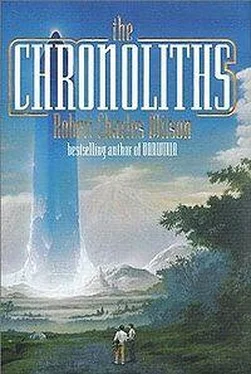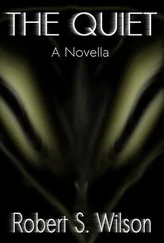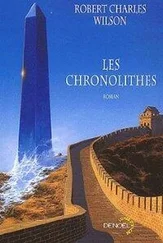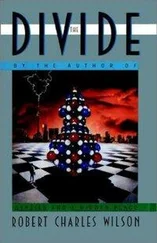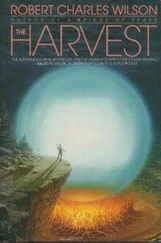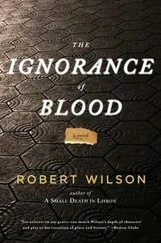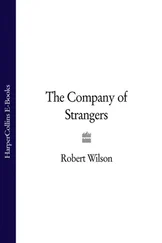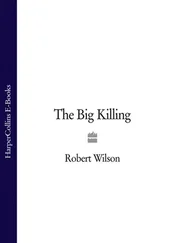Sue had fixed her eyes on the bluff. I followed her gaze.
Wispy smoke issued from the Uniforces observation point there.
“The journalists ,” she whispered.
But of course they weren’t journalists. They were Kuinists — a group of militiamen bright enough to have highjacked a network truck outside of Modesty Creek and savvy enough to have passed themselves off plausibly to our media-handlers at the gate. (Five genuine net newspeople were later found beaten and strangled in the rabbitbrush twenty miles down the road.) A dozen less presentable Kuinists in unmarked cars were smuggled in as technicians; weapons were effectively hidden amidst a cargo of lenses, broadcast apparatus, and imaging gear.
These people installed themselves on the bluff overlooking the tau core, near the Uniforces observation point. When they saw Hitch bring the last truck up to the bunker, they understood that to mean that the arrival was imminent. They destroyed the Uniforces outpost with an explosive device, picked off any survivors, then focused their efforts on the tau core.
I saw the puffs of smoke from their rifles, faint against the blue sky. They were too far from the core for accurate marksmanship, but sparks flew where their bullets struck the steel frame. Behind us, Uniforces gatekeepers began to return fire and radioed for support. Unfortunately the bulk of the forces were concentrated at the south gate, where the Kuinist mob had begun to fire on them in earnest.
Belatedly, I squatted in the dirt next to Sue. “The core is pretty heavily shielded—”
“The core is, I guess, but the cables and connectors are vulnerable — the instrumentation , Scotty!”
She rose and ran for the bunker. I had no choice but to follow, but first I waved in Hitch, who had just arrived and must have confused the gunfire from the bluff with the skirmish to the south of us. But when he saw Sue’s awkward headlong dash he understood the urgency.
The air was suddenly much colder, and a wind came gusting from the dry prairie, dust-devils marching like pilgrims into the heart of the tau event.
Even the heated concrete-lined bunker was colder than Sue had predicted as the thermal shock began to ramp up. It numbed the extremities, cooled the blood, imposed a strange languid slowness on a sequence of terrifying events. We all struggled into thermally-adaptive jackets and headgear as Hitch sealed the door behind him.
Like clockwork, the tau-core initiation process proceeded; like clockwork, it was immune at this point to human intervention. Technicians sat by their monitors with clenched fists, nothing to do but hope a stray bullet didn’t interrupt the flow of data.
I had seen the core’s connectors and cables, Teflon-insulated and Kevlar-sheathed and thick as firehoses. I didn’t think conventional bullets fired from a great range posed much danger, despite Sue’s fears.
But the militiamen had brought more than rifles.
The countdown clock passed the five-minute point when there was the rumble of a distant detonation. Dust shook down from the plank ceiling and the lights in the bunker winked off.
“Hit a generator,” I heard Hitch say, and someone else howled, “We’re fucking screwed!”
I couldn’t see Sue — I couldn’t see anything at all. The darkness was absolute. There were nearly forty of us crowded into the bunker behind its elaborate earthworks.
Our backup generator had obviously failed. Auxiliary batteries restored the pilot lights on the electronic gear but cast no useful light. Forty people in a dark, enclosed space. I pictured in my mind the entrance, a steel door set at the top of a concrete stepway maybe a yard from where I stood, fixing the direction in my mind.
And then — the arrival.
The Chronolith reached deep into the bedrock.
A Chronolith absorbs matter and does not displace it; but the cold shock fractured hidden veins of moisture, creating a shockwave that traveled through the earth. The floor seemed to rise and fall. Those of us who hadn’t grabbed a handhold fell to the ground. I think everyone screamed. It was a terrible sound, far worse than any physical damage done.
The cold got colder. I felt sensation drain from my fingertips.
It was one of our engineers who panicked and pushed his way to the exit hatch. I supect all he wanted was daylight — wanted it so badly that the need had overcome his reason. I was close enough to see him in the dim light from the console arrays. He found the steps, lunged upward on all fours, touched the door handle. The lever must have been shockingly cold — he screamed even as he put his weight against it. The handle chunked down convulsively and the door sprang outward.
The blue sky was gone, replaced by curtains of screaming dust.
The engineer lurched out. Wind and sand and granules of ice swept in. Had Sue anticipated an arrival as violent as this? Perhaps not — the journalists lined up east of us must have been sprawled in the dirt by now. And I doubted anyone was shooting from the bluff, not anymore.
The thermal shock had peaked but our body temperatures were still dropping. It’s an odd sensation. Cold, yes, indescribably cold, but lazy , deceptive, narcotic. I felt myself shivering inside my overworked protective clothing. The shivering felt like an invitation to sleep.
“Stay in the bunker!” Sue shouted from somewhere deep in the trench behind me. “You’ll all be safer in the bunker! Scotty, close that door !”
But few of the engineers and technicians heeded her advice. They spilled out past me into the screeching wind, running — insofar as the cold allowed them to run; more like a stumbling waltz — toward the line of parked vehicles.
Some few even managed to climb inside and start their engines. These vehicles had been proofed against the cold shock, but they roared like wounded animals, pistons grinding against cylinders. Arrival winds had battered down the perimeter fence and the civilian faction of our convoy began to vanish into the teeth of the storm.
West of us, where the Chronolith must have been, I could see nothing but a wall of fog and dust.
I pushed my way up the steps and pulled the hatch shut. The engineer had left some skin on the frigid lever. I left some of my own.
Sue secured some battery lamps and began to switch them on. Maybe a dozen of us remained in the bunker.
As soon we had some light Sue slumped down against one of the inert telemetry devices. I reeled across the room and joined her. Almost fell against her. Our arms touched, and her skin was shockingly cold (as I suppose was my own). Ray was nearby but had closed his eyes and seemed only intermittently conscious. Hitch squatted by the door, stubbornly alert.
Sue put her head on my shoulder.
“It didn’t work, Scotty,” she whispered.
“We’ll think about that later.”
“But it didn’t work . And if it didn’t work —”
“Hush.”
The Chronolith had touched down. The first Chronolith on American soil… and not a small one, judging by the secondary effects. Sue was right. We had failed.
“But Scotty,” she said, her voice infinitely weary and bewildered, “if it didn’t work… what am I doing here? What am I for ?”
I thought it was a rhetorical question. But she had never been more serious.
I suppose, when history allows a degree of objectivity, someone will write an aesthetic appreciation of the Chronoliths.
Obscene as this idea may seem, the monuments are arguably specimens of art, each one individual, no two quite alike.
Some are crude, like the Kuin of Chumphon: relatively small, lacking detail, like sand-cast jewelry; the work of a novice. Others are more finely sculpted (though they remain as bleakly generic as works of Soviet Realism) and more carefully considered. For instance, the Kuins of Islamabad or Capetown: Kuin as gentle giant, benevolently masculine.
Читать дальше
